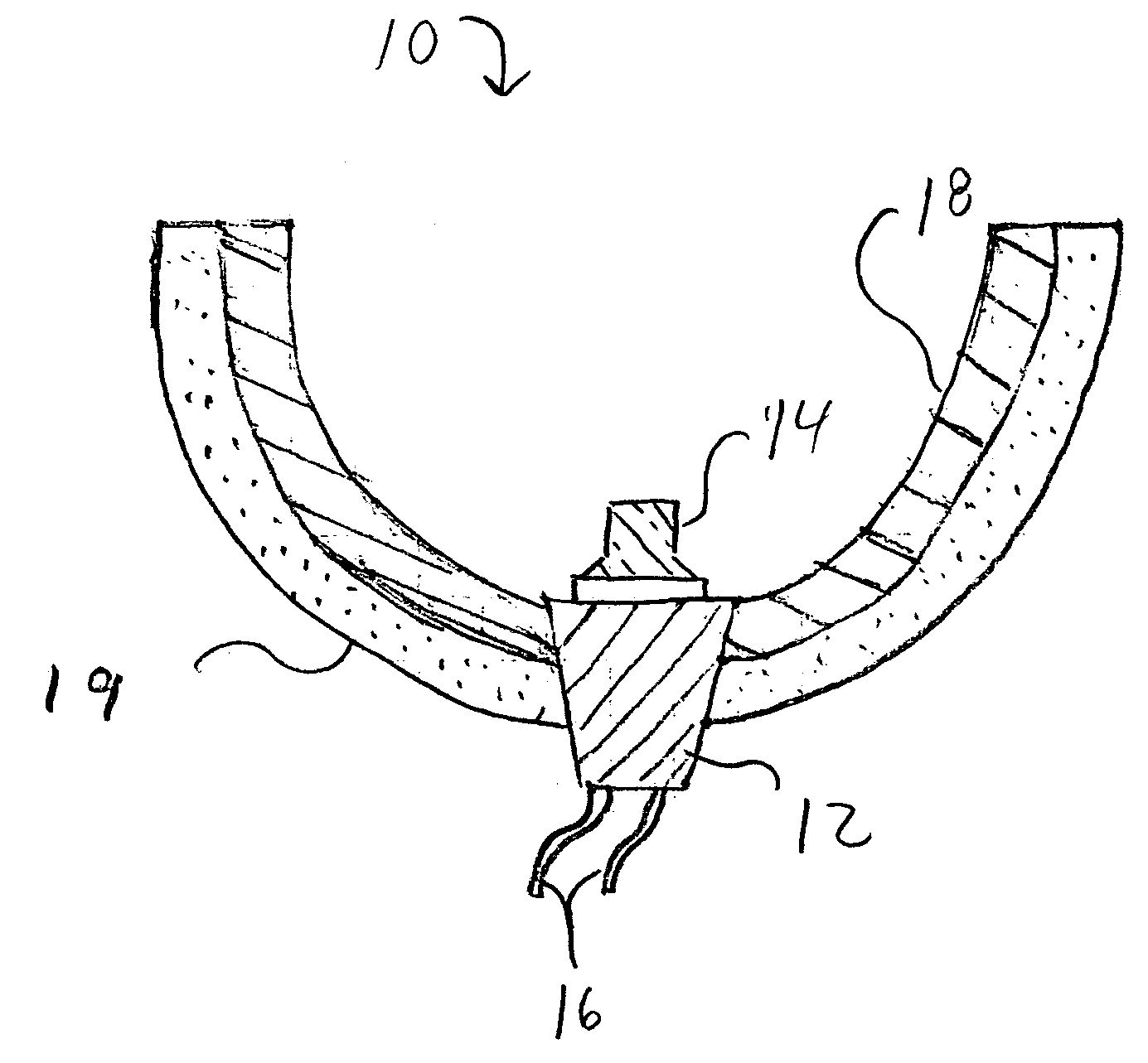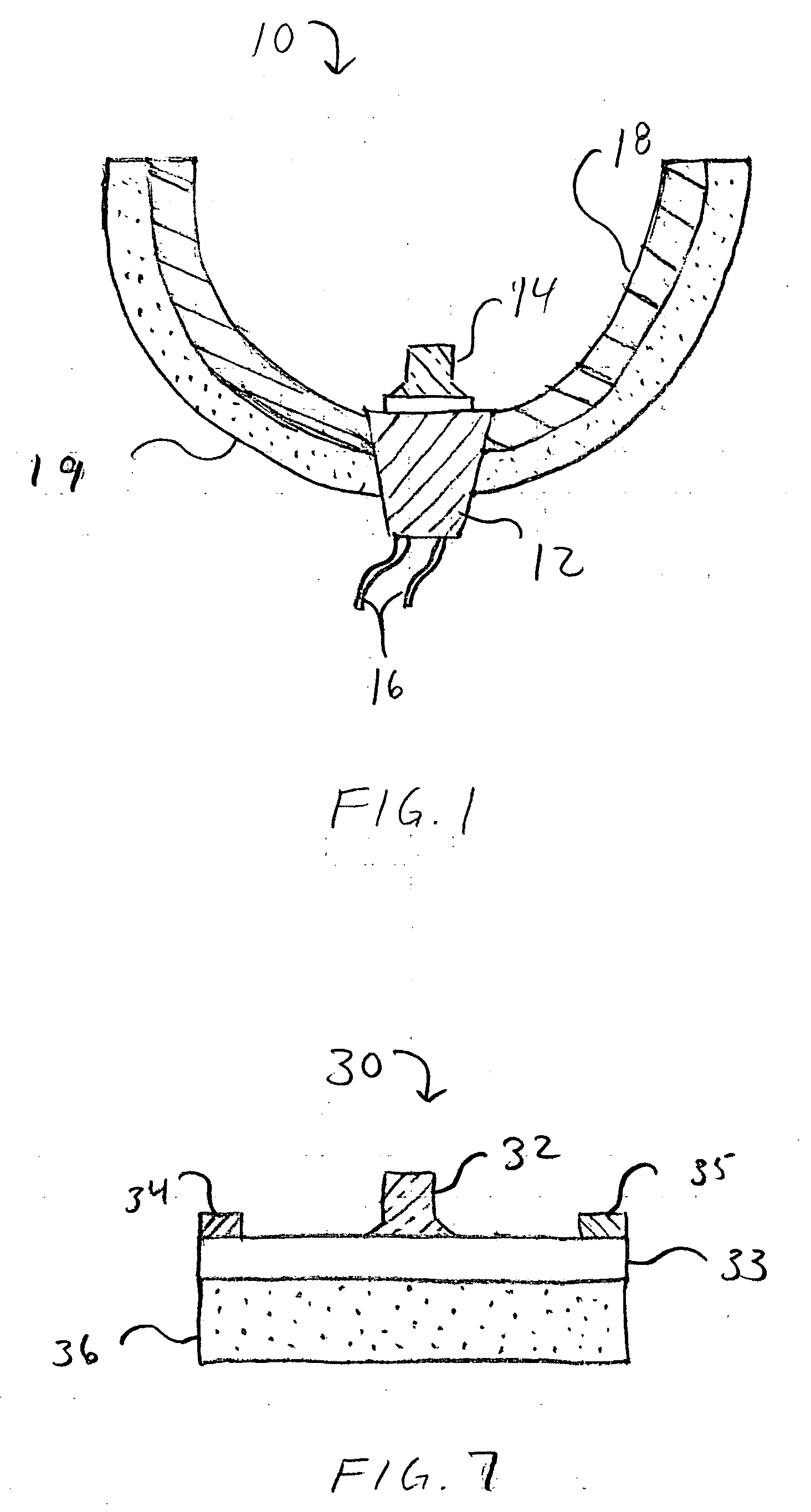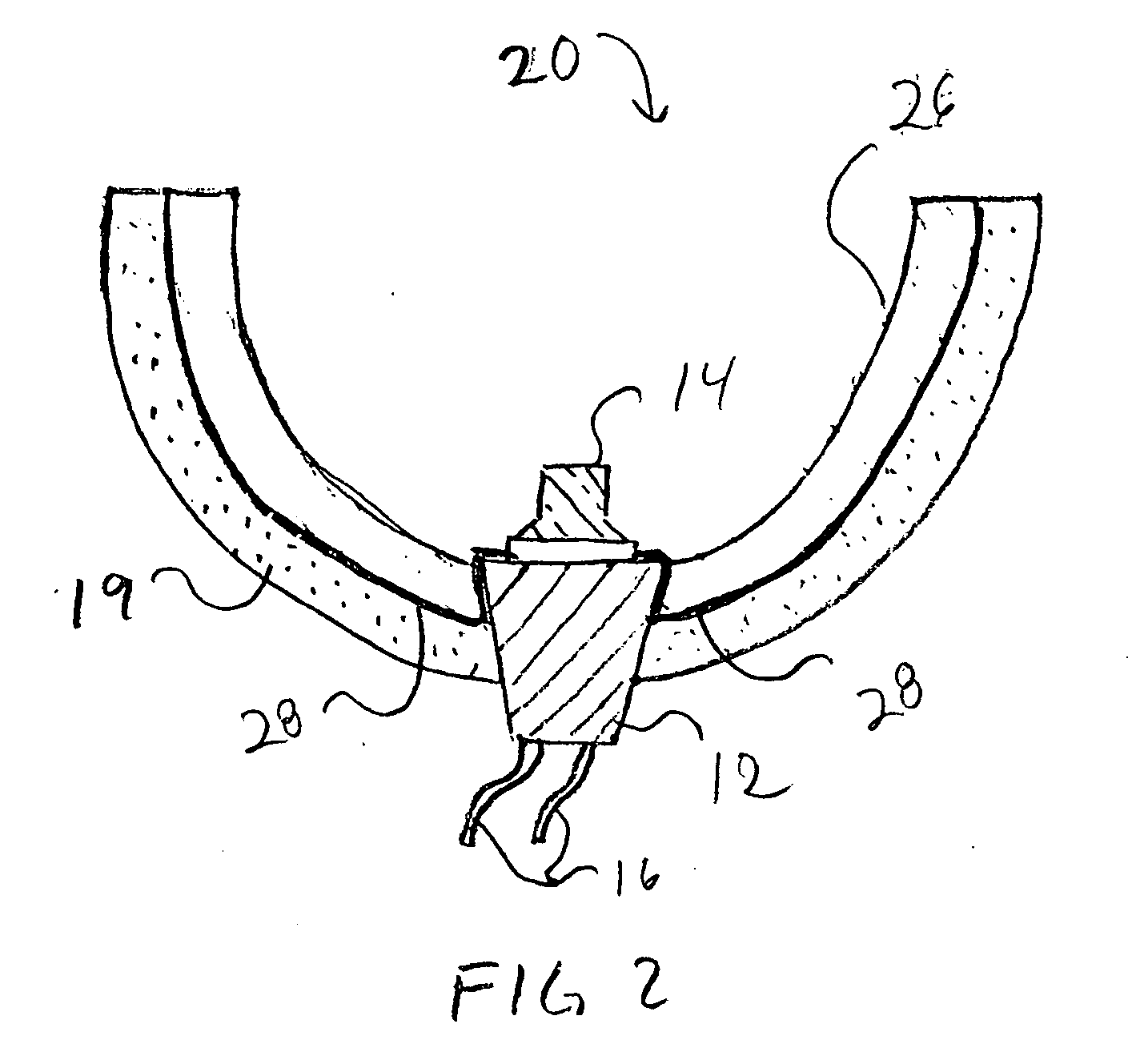High power solid-state lamp
- Summary
- Abstract
- Description
- Claims
- Application Information
AI Technical Summary
Benefits of technology
Problems solved by technology
Method used
Image
Examples
Embodiment Construction
[0026] The present invention provides improved heat management for high-power solid state light emitters and power devices by utilizing one or more heat sinks that at least partially comprise porous structures made of high thermal conductivity material.
[0027] Many different types of porous material can be used including metals such as porous aluminum or copper, or inorganic materials such as carbon or porous ceramics. The pores in the material should interconnect to facilitate an effective convective heat exchange with the ambient, and the thickness of the material and pore size should provide for optimum conductive heat transfer through the pore structure without entrapping pockets of air within the material, and with the pores providing a continuous air channel to the ambient. The porous material should be arranged in thermal contact with the particular emitter or power device so that heat conducts from the device into and throughout the porous material (foam). The porous materia...
PUM
 Login to View More
Login to View More Abstract
Description
Claims
Application Information
 Login to View More
Login to View More - R&D
- Intellectual Property
- Life Sciences
- Materials
- Tech Scout
- Unparalleled Data Quality
- Higher Quality Content
- 60% Fewer Hallucinations
Browse by: Latest US Patents, China's latest patents, Technical Efficacy Thesaurus, Application Domain, Technology Topic, Popular Technical Reports.
© 2025 PatSnap. All rights reserved.Legal|Privacy policy|Modern Slavery Act Transparency Statement|Sitemap|About US| Contact US: help@patsnap.com



